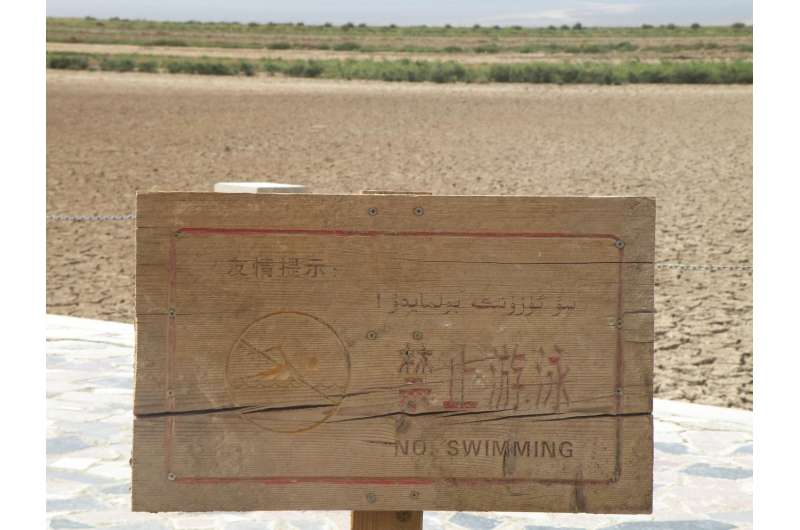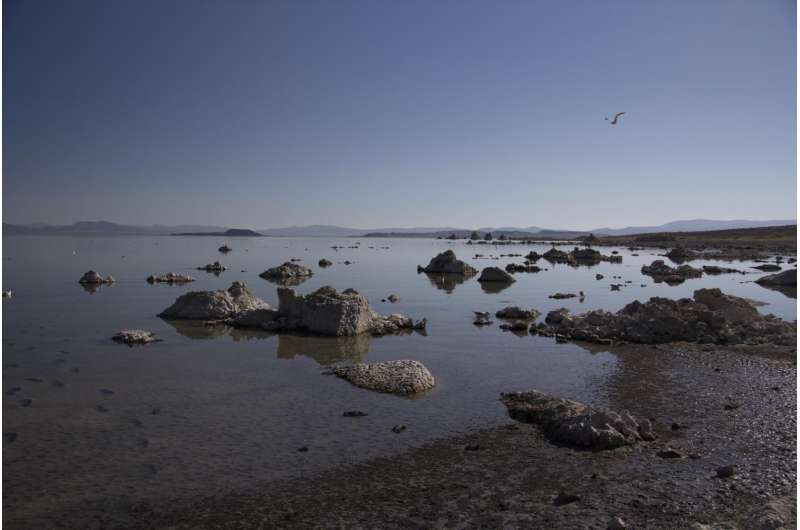June 2, 2017 report
Study of the past suggests Earth's rain belts may shift farther north

(Phys.org)—A pair of researchers with the University of Maine and Columbia University has conducted a study of the past to make predictions about rainfall patterns in coming years. In their paper published in the journal Science Advances, Aaron Putnam and Wallace Broecker outline their study and offer three ways they believe planetary warming might influence the global distribution of rainfall.
As the planet heats up due to greenhouse gas emissions, it is logical to assume that there will be more rainfall—warmer air holds more moisture. But where will that moisture fall, and will some areas actually see less? That is what planetary scientists are trying to figure out. In this new effort, the research pair studied a period during which the planet was warming after a cool spell to learn more about future rainfall distribution.
One of the big factors impacting rainfall distribution, the pair note, is the fact that the Northern Hemisphere has a lot more land mass than the Southern Hemisphere—more land mass means more heat, which means the Northern Hemisphere will almost certainly see more of rainfall than the Southern Hemisphere. To learn more about how it may all play out, the researchers looked at paleoclimate data from various parts of the planet, such as closed lake basins, stalagmites and ice core samples. They also looked at materials that have been carbon dated to assemble a picture of how and where rainfall patterns changed during a time of similar warming approximately 14,600 years ago. That led them to conclude that three scenarios are likely.
The first is that tropical rainfall will increase while subtropical areas will get less rain. The second is that it is likely that the planet's rain belts and dry zones will shift north. The third is that it is possible that the first two scenarios will occur at the same time. This all means that tropical areas will get more rain, while the fringes and middle latitudes will likely see less rain. That might mean stronger summer monsoons, they note, and dry places like the western United States and Mongolia getting even drier.

More information: Human-induced changes in the distribution of rainfall, Science Advances 31 May 2017: Vol. 3, no. 5, e1600871, DOI: 10.1126/sciadv.1600871
Abstract
A likely consequence of global warming will be the redistribution of Earth's rain belts, affecting water availability for many of Earth's inhabitants. We consider three ways in which planetary warming might influence the global distribution of precipitation. The first possibility is that rainfall in the tropics will increase and that the subtropics and mid-latitudes will become more arid. A second possibility is that Earth's thermal equator, around which the planet's rain belts and dry zones are organized, will migrate northward. This northward shift will be a consequence of the Northern Hemisphere, with its large continental area, warming faster than the Southern Hemisphere, with its large oceanic area. A third possibility is that both of these scenarios will play out simultaneously. We review paleoclimate evidence suggesting that (i) the middle latitudes were wetter during the last glacial maximum, (ii) a northward shift of the thermal equator attended the abrupt Bølling-Allerød climatic transition ~14.6 thousand years ago, and (iii) a southward shift occurred during the more recent Little Ice Age. We also inspect trends in seasonal surface heating between the hemispheres over the past several decades. From these clues, we predict that there will be a seasonally dependent response in rainfall patterns to global warming. During boreal summer, in which the rate of recent warming has been relatively uniform between the hemispheres, wet areas will get wetter and dry regions will become drier. During boreal winter, rain belts and drylands will expand northward in response to differential heating between the hemispheres.
Journal information: Science Advances
© 2017 Phys.org




















